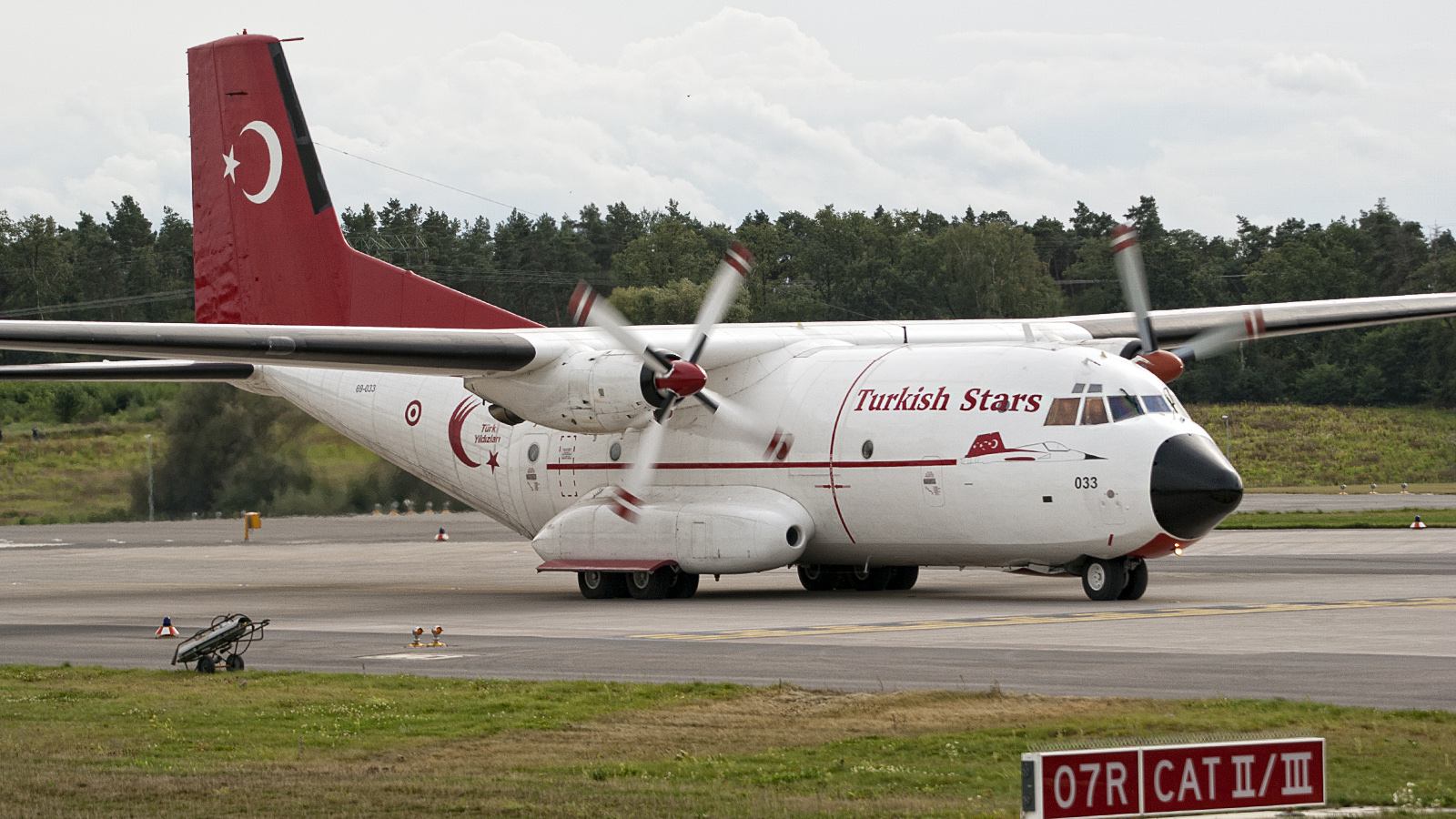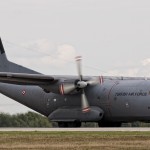
The Transall C-160 is a twin-engined military transport aircraft that can take-off and land on unprepared strips. The Transall C-160 is developed by a consortium of French and German aircraft manufacturers as Transporter Allianz. The C-160 was the first Franco-German European aircraft program.
Developing nation: France and Germany
Manufacturer/designer: Transporter Allianz
Production lines: 1965 – 1985 French aircraft built by Aérospatiale and German aircraft by Messerschmitt-Bölkow-Blohm
First flight: 25 February 1963
Number built: 214
Three prototypes flew in 1963, followed by pre-production examples in 1965 and production airframes from 1967.
C-160D
110 C-160Ds for the Luftwaffe (German Air Force). The German air force received its first specimen on 30 April 1968. 110 more planes followed and replaced the “Noratlas” Nord 2501 which was used before.
C-160F
50 C-160Fs for the French Air Force
C-160G Gabriel
The C-160 Gabriel configures an ELINT subsystem provided by Thomson-CSF Radars & Contre-Mesures for detection, analysis and location of radar sources with a COMINT subsystem provided by Thomson-CSF Communications for detection, interception, classification, listening-in, analysis and location of radio transmitters. Thomson-CSF Radars & Contre-Mesures has developed complete SIGINT electronic intelligence systems for integration on board aircraft such as DC-8, Boeing 707, C-160, Transall and C-130. Special features include wingtip pods with UHF/DF blade antennas, a group of five large blade antennas on top of the forward fuselage, a blister fairing on each side of the rear fuselage, and a retractable dome, under the forward fuselage.
C-160H Astarte
Four communications relay aircraft, designation C-160H Astarte (Avion STAtion Relais de Transmissions Exceptionelles), have been delivered to the French Air Force since 1987. The aircraft’s main mission is communications with the submerged nuclear ballistic missile submarines of the French fleet.
C-160NG
France ordering 25 C-160NG models (Nouvelle Génération) which differ from their predecessors by virtue of additional fuel capacity and improved avionics. Range limitations have been partly resolved by the extra center-section fuel tank, but the newest C-160s also feature inflight refueling capability in the form of a probe above the cockpit.
C-160P
C-160Fs were converted to C-160P air mail transport aircraft, and were operated by Air France.
C-160R
In 1994, an upgrade program for French Air Force C-160s which was completed in 1999. The upgraded cockpit is equipped with a new head0-up display and an upgraded electronic warfare suite with a radar warning receiver, missile approach warner and chaff and decoy dispensers.
German Air Force C-160Ds have been upgraded with BAE SYSTEMS High Integration Air Data Computer (HIADC), Litton ALR-68 radar warning systems and Rockwell FMS-800 Flight Management and Global Positioning System.
C-160T
Turkey, which took delivery of 20 C-160T aircraft (former Luftwaffe examples) in the early-1970s.
C-160Z
9 C-160Zs for the South African Air Force.
General characteristics
- Crew: Three—two pilots, flight engineer
- Capacity:
- 93 troops or
- 61–88 paratroops or
- 62 stretchers
- Payload: 16,000 kg (35,275 lb)
- Length: 32.40 m (106 ft 3½ in)
- Wingspan: 40.00 m (131 ft 3 in)
- Height: 11.65 m (38 ft 2¾ in)
- Wing area: 160.0 m² (1,722 ft²)
- Empty weight: 29,000 kg (63,935 lb)
- Max takeoff weight: 51,000 kg (112,435 lb)
- Powerplant: 2 × Rolls-Royce Tyne Rty.20 Mk 22 turboprop, 4,549 kW (6,100 ehp) each
Performance
- Never exceed speed: 593 km/h (320 knots, 368 mph)
- Maximum speed: 513 km/h (277 knots, 319 mph) at 4,875 m (16,000 ft)
- Stall speed: 177 km/h (95 knots, 110 mph) flaps down
- Range: 1,853 km (1,000 nmi, 1,151 mi) with 16,000 kg payload, 30 min reserves
- Ferry range: 8,858 km (4,780 nmi, 5,504 mi)
- Service ceiling: 8,230 m (27,000 ft)
- Rate of climb: 6.6 m/s (1,300 ft/min)
- Wing loading: 319 kg/m² (65.3 lb/ft²)
- Power/mass: 0.18 kW/kg (0.11 hp/lb)
All pictures courtesy of Zijde Aviation Photo and Publishing, Rob Vogelaar.











